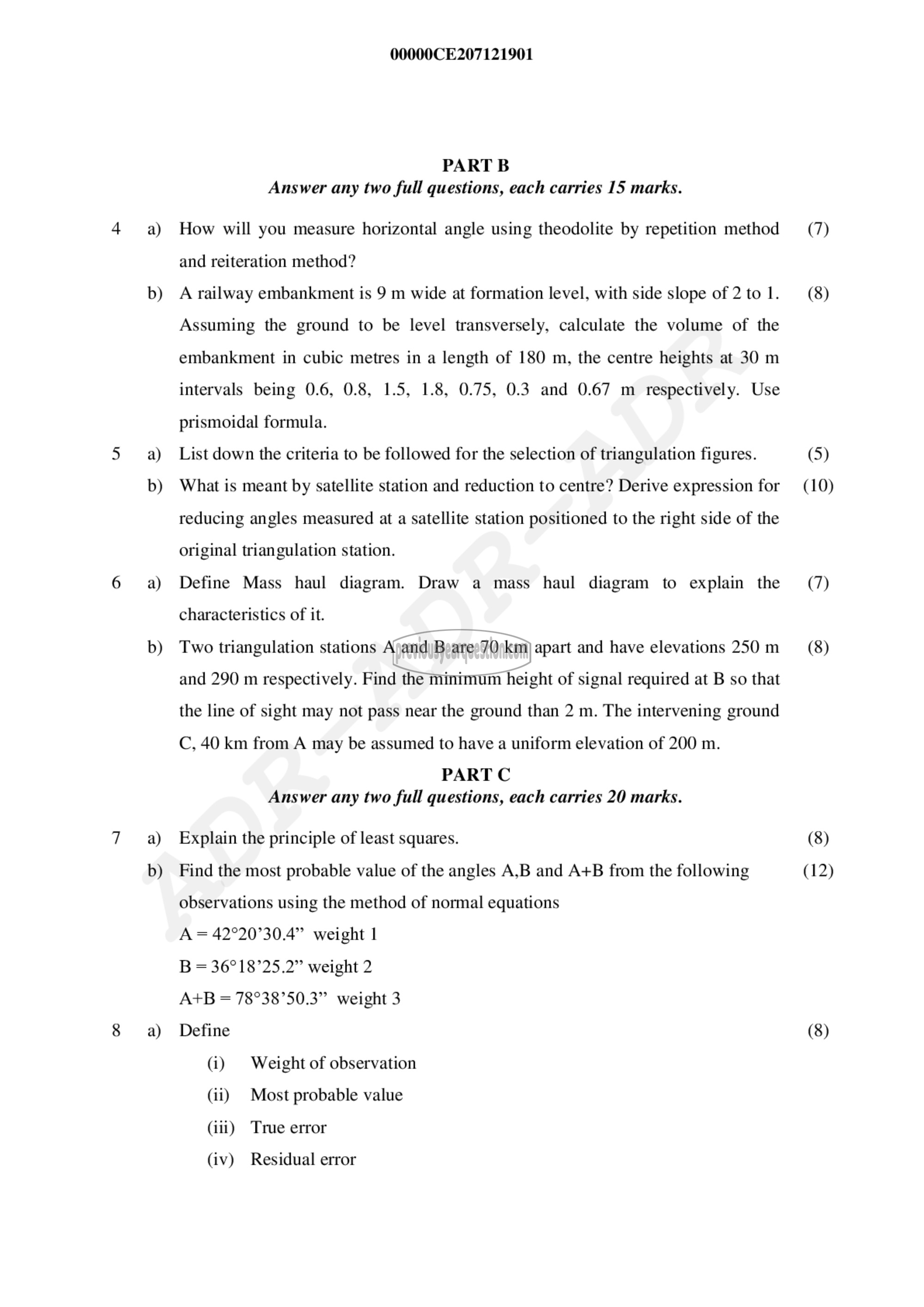APJ ABDUL KALAM TECHNOLOGICAL UNIVERSITY Previous Years Question Paper & Answer
Semester : SEMESTER 3
Subject : Surveying
Year : 2020
Term : SEPTEMBER
Branch : CIVIL ENGINEERING
Scheme : 2015 Full Time
Course Code : CE 207
Page:2
a)
b)
a)
b)
a)
b)
a)
b)
a)
00000CE207121901
PART 13
Answer any two full questions, each carries 15 marks.
How will you measure horizontal angle using theodolite by repetition method
and reiteration method?
A railway embankment is 9 m wide at formation level, with side slope of 2 to 1.
Assuming the ground to be level transversely, calculate the volume of the
embankment in cubic metres in a length of 180 m, the centre heights at 30 m
intervals being 0.6, 0.8, 1.5, 1.8, 0.75, 0.3 and 0.67 m respectively. Use
prismoidal formula.
List down the criteria to be followed for the selection of triangulation figures.
What is meant by satellite station and reduction to centre? Derive expression for
reducing angles measured at a satellite station positioned to the right side of the
original triangulation station.
Define Mass haul diagram. Draw a mass haul diagram to explain the
characteristics of it.
Two triangulation stations A and B are 70 km apart and have elevations 250 m
and 290 m respectively. Find the minimum height of signal required at B so that
the line of sight may not pass near the ground than 2 m. The intervening ground
C, 40 km from A may be assumed to have a uniform elevation of 200 m.
PART C
Answer any two full questions, each carries 20 marks.
Explain the principle of least squares.
Find the most probable value of the angles A,B and A+B from the following
observations using the method of normal equations
A= 42°20°30.4” weight 1
B = 36°18’25.2” weight 2
A+B = 78°3850.3 weight 3
Define
(i) Weight of observation
(ii) Most probable value
(iii) True error
(iv) Residual error
(7)
(8)
(5)
(10)
(7)
(8)
(8)
(12)
(8)
